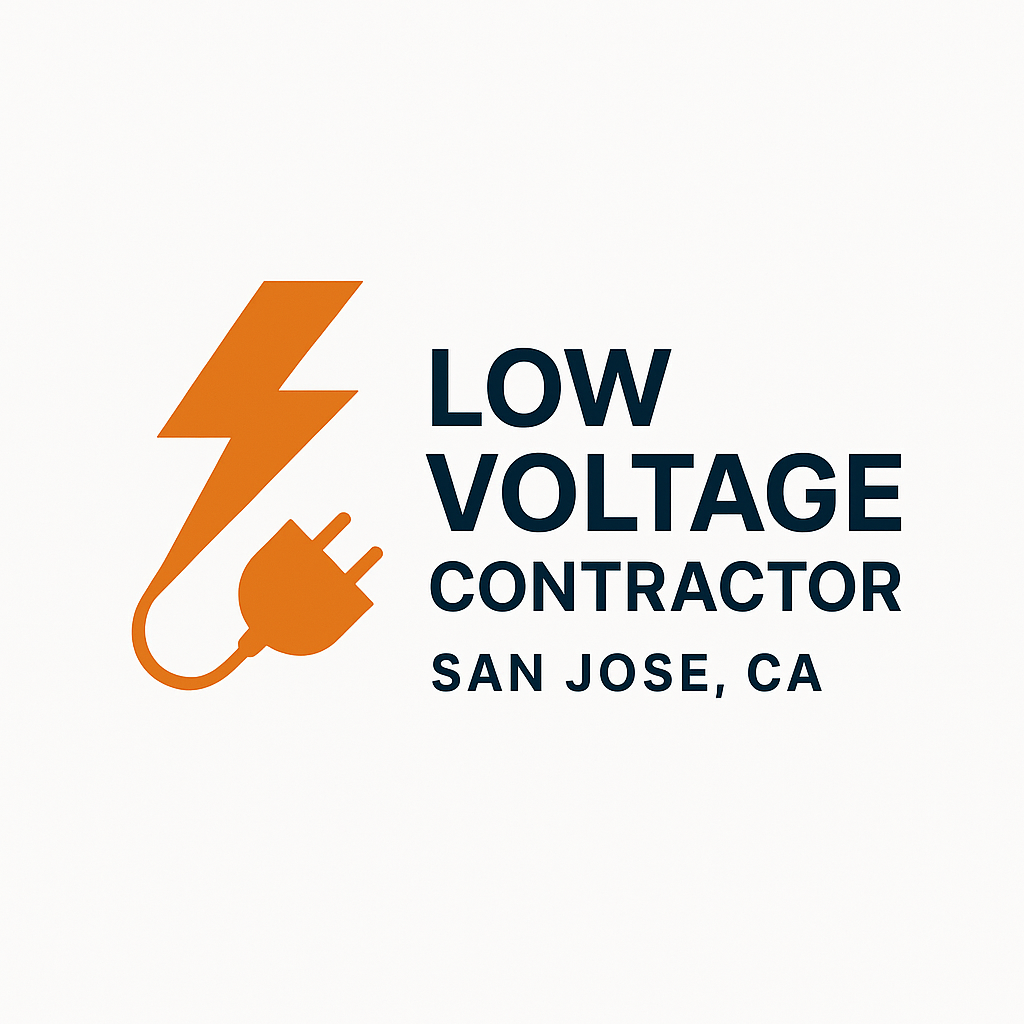San Jose Building Codes Every Low Voltage Project Must Follow
When planning a low voltage installation in San Jose—whether for security cameras, structured cabling, or smart lighting—understanding local building codes is essential. While low voltage systems operate at safer power levels than high voltage wiring, they are still subject to strict compliance under the National Electrical Code (NEC), California’s Title 24 Energy Standards, and the San Jose Department of Building Inspection (SJDBI) permitting process.
This guide breaks down the requirements San Jose property owners and contractors must follow to ensure safety, efficiency, and code compliance.
Why Low Voltage Systems Still Require Code Compliance
Common Low Voltage Applications
- Security cameras and access control
- Fire alarms and life safety systems
- Data networks and structured cabling
- Audio/visual systems and intercoms
- Landscape and LED lighting
Risks of Non-Compliance
- Failed inspections
- Fines or stop-work orders from SJDBI
- Insurance claim denials in case of fire or damage
- Reduced property value due to unpermitted work
National Electrical Code (NEC) Requirements in San Jose
Article 725 – Class 1, Class 2, and Class 3 Circuits
- Class 2 circuits (≤100 VA, ≤60V) are most common for data and security wiring.
- Power-limited design reduces fire and shock hazards but installation practices must still comply.
Article 800 – Communications Circuits
- Covers voice, data, internet, and video distribution wiring.
- Requires separation from power wiring to avoid interference.
Article 760 – Fire Alarm Systems
- Strict rules on cabling, conduit, and termination for fire safety.
- Fire alarms often require dedicated permits in San Jose.
California Title 24 Requirements
Energy Efficiency Standards
Title 24 applies to low voltage systems tied to lighting controls, HVAC sensors, and building automation.
Key Title 24 Low Voltage Provisions
- Automatic shutoff controls required for commercial lighting.
- Daylight harvesting sensors must be connected in certain zones.
- Demand-response readiness for smart building systems.
Compliance Documentation
Contractors must provide Certificate of Compliance (NRCC) forms during plan submittal to SJDBI.
San Jose Department of Building Inspection (SJDBI) Permitting
When Permits Are Required
- Yes: Fire alarms, access control, CCTV, structured cabling in commercial buildings.
- No (sometimes): Simple residential low voltage (e.g., doorbell wiring), though inspections may still be required.
The Permitting Process in San Jose
- Submit plans through SJDBI online portal.
- Obtain low voltage electrical permit.
- Schedule inspections (rough-in and final).
- Approval and sign-off.
Local Amendments to NEC
San Jose enforces California Electrical Code (CEC), which adopts NEC but may include stricter local amendments.
Safety and Best Practices for Low Voltage Project
Conduit and Raceway Rules
- Low voltage cables cannot always be bundled with high-voltage circuits.
- Plenum-rated cable is required in air-handling spaces.
Grounding and Bonding
- Even low voltage systems may require bonding to building ground for surge protection.
Licensed Contractor Requirement
Only licensed C-7 Low Voltage Contractors or C-10 Electrical Contractors can legally pull permits for low voltage work in San Jose.
Common Mistakes and Misconceptions
“Low Voltage Doesn’t Need a Permit”
False—fire alarms, CCTV, and access control almost always require permits.
“All Codes Are the Same Across California”
Not true—San Jose may have stricter enforcement compared to other cities.
“DIY Wiring Is Safe Enough”
Unpermitted DIY wiring can void insurance coverage and fail city inspections.
What San Jose Property Owners Should Do
For Homeowners
- Check if your low voltage project requires a permit.
- Hire a licensed contractor familiar with SJDBI requirements.
- Schedule inspections to avoid compliance issues.
For Business Owners & Property Managers
- Ensure contractors provide Title 24 compliance documentation.
- Require as-built drawings for future system upgrades.
- Maintain inspection records for insurance and resale.
Conclusion & Key Takeaways
- NEC Articles 725, 760, and 800 govern most low voltage projects.
- Title 24 adds energy efficiency requirements for lighting and automation.
- SJDBI permits are mandatory for most commercial and life-safety systems.
- Hiring a licensed contractor ensures compliance and avoids costly rework.
For San Jose property owners, compliance means safety, efficiency, and peace of mind.
